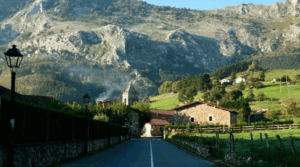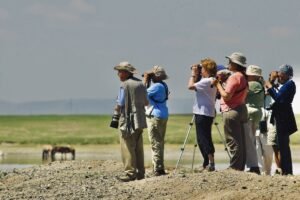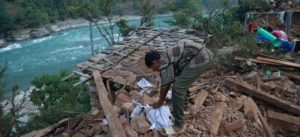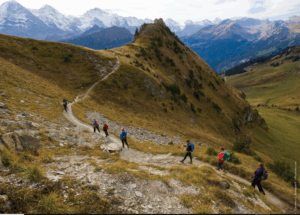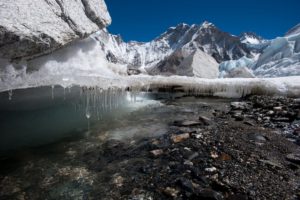Mountaineering in Nepal
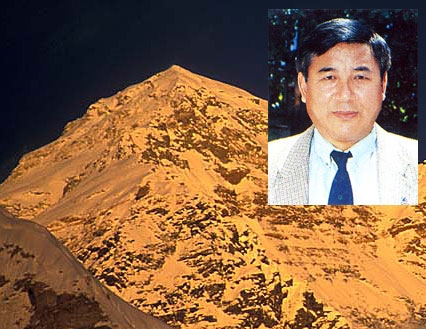
By Ang Tshering Sherpa
Ang Tshering Sherpa, Immediate Past President of the Nepal Mountaineering Association and chairman of Asian Trekking provides detailed mountaineering facts and figures in Nepal. His exhaustive study not only provides statistics and highlights exceptional climbs but also tries to show the economic importance of the sport to Nepal’s economy. Here is Ang Tshering Sherpa’s report:
How many people have climbed Mt. Everest so far ?
Between 1953 and 2010, the total number of ascents was 5078 by 3167 individuals (some having summited more than once).
This year’s spring total has seen 375 more ascents from Nepal of which 195 were new summiteers. Similarly, there were 131 summits from Tibet of which·86 are new summiteers and the rest were repeat summiteers.
In summary, the total number of ascent of Mt. Everest so far is·5584, whereas the actual number of summiteers is-3448 till 26 Jul 2011.
How many climbing teams and how many climbers came to Nepal during this spring climbing season?
1. Expedition Peaks whose permits are issued by the Ministry of Tourism and Civil Aviation (Government of Nepal).
2. Climbing Peaks (NMA Peaks), whose permits are issued by Nepal Mountaineering Association.
The Ministry of Tourism and Civil Aviation manages 8000m and 7000m peaks while NMA issues permits for the 33 popular peaks ranging from 5587m to 6654m.
Mountaineering Expedition Peaks:
The Ministry of Tourism and Civil Aviation issued a total of 92 permits to Mountaineering teams to various peaks in this spring season of 2011. Of these, 23 were permits for foreign Mt. Everest expedition teams; with 234 climber, 259 High Altitude Climbing Sherpas (HAS) and 164·kitchen staffs (at Base Camp and Camp 2). Amazingly, out of 259 HAS, 219 summited Mt.Everest (85% of this Climbing Season’s total). Similarly, out of 234 foreign climbers, 156 summited Mt.Everest (67% of this Climbing Season’s total) After Nepalese, Americans, British and Indians had the highest number of summiteers on Everest with 39, 27 and 19 summiteers respectively.
Also, there were 3 Nepalese Everest Expedition teams with 17 climbers and 21 HAS going above Base Camp and one Nepalese women team of 4·women climbers on Annapurna IV. Nepalese teams do not have to pay peak permit fees, if the Cabinet of Ministers sanctions their expedition.
Economic contribution of Mt. Everest Expeditions (Nepal side in the spring 2011 climbing season )The following are the estimated economic contributions from south side of Mt. Everest in this climbing season of spring 2011:
|
|
Item |
US$ |
Nepalese Rupees |
|
1 |
Total Mt. Everest Climbing ·Permit Fee from 23··Foreign Exp. Teams |
23,81,000/ |
17,14,32,000/ |
|
2 |
Total porter wages from Lukla to EBC -·9,660·porter loads of 30kgs each load |
11,06,875/ |
7,96,95,000/ |
|
3 |
Total porter wages from B.C. to Lukla- 5,313 porter loads of 30kgs each load |
6,08,781/ |
4,38,32,250/ |
|
4 |
HAS- Equipment allowances, wages, climbing bonus, summit bonus, insurance, etc |
10,79,166/ |
8,14,72,752/ |
|
5 |
BC and C2 kitchen staffs- Equipment allowances, wages, insurance etc. |
4,55,556/ |
3,28,00,000/ |
|
6 |
Flights: Ktm/Lukla Or Shyangboche/Ktm for passengers and luggage, helicopter flight, hotels in Ktm & on the way, transfers, meals etc······· |
7,32,330/ |
5,27,27,760/ |
|
7 |
Insurance for porters, food purchase, kitchen utensils, drinks, EBC fuels, solar panels & generators for lighting, charges, fresh supplies |
4,50,670/ |
3,24,48.240/ |
|
8 |
Sleeping tents, dining tents, kitchen & storage tents, toilet tents, mattresses, chairs, tables, heaters etc. |
4,37,000/ |
3,14,64,000/· |
|
9 |
H.A. foods, HA fuel, oxygen bottles, masks, regulators, climbing equipments, common climbing equipments, ice fall route fixing charges, route fixing charges above C1 to summit, EBC HRA Aid post fee, SPCC garbage management & disposal fee etc. |
17,64,600/ |
12,70,51,200/ |
|
· |
Total economic contribution from Mt. Everest Expedition teams in one climbing season of Spring 2011 |
90,15,978/ |
64,91,15,042/ |
This spring 2011, Nepal saw that the most number of climber (besides Nepalese) on the Expedition Peaks were from the USA with 129 climbers, Indians with 48 climbers and British climbers with 36 climbers. Sadly, perhaps due to the Earthquake and Tsunami, the number of Japanese climbers has sharply dropped this year.
On Mt. Everest, 60 per cent of the climbers were Nepalese (High Altitude Climbing Sherpas) while 40 per cent were foreign climbers. However, on other Expedition Peaks, 38% of the climbers were Nepalese and 62 per cent were foreign climbers.
To Summarize: This spring the other Expedition Peaks of Nepal (beside Mt. Everest) saw a total of 465·foreign climbers, plus·229 HAS and·265 kitchen staffs. My best estimate is that these teams had approximately 8631 porter loads to their respective Base Camps and·5610 porter loads from Base Camp back down to the road head or airport.
Economic Contribution from these expedition teams in climbing season of spring 2011: The following is my estimate of the economic contributions that expedition teams (other than Mt. Everest) provide in this climbing season of spring 2011.
|
|
Item |
US$ |
Nepalese Rupees |
|
1 |
The total peak permit collection from these peaks |
· 3,83,700: |
· 2,76,26,400: |
|
2 |
Total porter wages to BC -·8631 porter loads ·and back from BC-·5610 porter loads·· |
14,89,927: |
·11,74,88,250: |
|
3 |
HAS- Equipment allowances, remuneration, climbing bonus, summit bonus, insurance etc· |
·7,95,139:· |
·· 5,72,50,025: |
|
4 |
BC and C2 kitchen staffs equipment allowances, remuneration, allowances, insurance etc. |
·7,36,111:· |
·· 5,29,99,992: |
|
5 |
Flights: For passengers and luggage, helicopter flight, transportations, ·hotels in Ktm & on the way, transfers, meals, insurance for porters, food purchase, kitchen utensils, drinks, EBC fuels, solar panels & generators for lighting, charges, fresh supplies, EBC tents, dining tents, kitchen & store tents, toilet tents, mattresses, chairs, tables, heaters etc. |
17,35,400:· |
·12,49,48,800: |
|
6 |
H.A. foods, HA fuel, oxygen bottles, masks, regulators, climbing equipments, common climbing equipments, ice fall route fixing charges, route fixing charges above C1 to summit, EBC HRA Aid post fee, SPCC garbage management & disposal fee etc· |
14,54,500: |
·10,47,24,000: |
|
· |
Total economic contribution from Mt. Everest Expedition teams in one climbing season of Spring 2011 |
·67,36,631: |
48,50,37,467: |
NMA Climbing Peaks:
Total permits issued by Nepal Mountaineering Association to NMA Peak climbing teams to various NMA peaks are·447·climbing·teams with total 2015 foreign climbers in Spring 2011.·These teams recruited·2317 persons as climbing guides, assistant guides, cooks and kitchen staffs and I estimate approximately·15,162 porters to Base Camp and·9,855 porter loads back from Base Camp.
On NMA peaks: The highest number of climbers were from the UK with 258 climbers, second were Germans with 240 climbers and the USA with 190 climbers. On NMA peaks: 33 per cent of Climbers were Nepalese, whereas 67 per cent were foreign climbers.
Tibet Expeditions on Mt. Everest and other 8000m Peaks- Spring 2011:
This climbing season, on the Tibet side of Mt. Everest, there were 17 teams with 139 foreign climber, 156 HAS,·22 Chinese Exp. Members and guides·and 7 Tibetan/Chinese rope fixing team members. Among them 46 foreign climbers,·56 HAS and·29 Chinese/ Tibetan climbers reached the top of Mt. Everest from North Side this Spring Season.
On Mt. Cho-Oyu there were 10 teams with a total of·112 climbers (including HAS) and·among them 11 foreign climbers and 12 HAS reached the summit of Mt. Cho-Oyu.
On Mt. Shishapangma there were 8 teams with a total of 60 climbers (including HAS) and among them 16 foreign climbers and 7 HAS reached the top of Mt. Shishapangma from both the South Face and the Normal Route (North Side). Notable Records and
Ascents on Climbing Season 2011:
World Records and remarkable climbs in this Climbing Season 2011:
Apa Sherpa, Climbing Leader of Eco Everest Expedition 2011 reached the summit of Mt. Everest for the 21st time – a new world record with the message of “Stop Climate Change” on 11 May 2011.
Phurba Tashi Sherpa is now the person with the most number of ascents to the top of 8000m peaks. He has climbed Mt. Everest 19 Times (Second to Apa Sherpa), Mt. Cho Oyu 5 times, Mt. Manaslu 2 times, Mt. Shishapagma once and Mt.Lhotse once; a total of 28 ascents of 8000m peaks.
Mr. Vikash Kaushik (24 yrs) and Mrs. Sushma Kaushik· (27 yrs) are the first Indian Couple to summit Mt. Everest and·they claim to be the·youngest couple in the world.
Swiss Speed Climber Ueli Steck reached the Summit of Mt. Shishapangma (8027m) via the South Face Route on 17th April. This was the first Summit of any 8000m Peak in the spring climbing season. Ueli Steck broke the previous record of Inaki Ochoa de Olza via the Austrian Route (14 hours) in 2006, and became the record holder for fastest ascent of Mt. Shishapangma (10:30 hours).
Arjun Vajpai (17 yrs 11mths) the youngest India Everest summiteers, who climbed Mt. Everest with Asian Trekking’s Eco Everest Expedition 2010 is now also the youngest Mt. Lhotse summiteer. Earlier Ms.Tamara Lunger of Italy was the youngest Lhotse Summit record holder who summitted Spring 2010 at the age of 23 years old.
Charlie Wittmack, leader of the American team of an autonomous part of the Eco Everest Expedition reached the top of Mt. Everest and became the first person to accomplished his trip to Nepal by swimming the length of the Thames river in England prior to swimming the English channel and finally hopping on his bike and cycling all the way to Tibet·from Calais In France. ·
Chhurim·Dolma Sherpa (27yrs) of Nepal became the first Woman to summit Mt. Everest twice in one climbing season (12 May and 19 May).
Carlos Soria (72yrs) of Spain is the oldest person to summit Mt. Lhotse. He reached the top of Mt. Lhose on·21 May·
Fatal Events on Mountains:
Besides the good news I also have sad news to share.
We express our heartfelt condolences to the bereaved family members of all those who died.
Free Climbing Permit Fee for Peaks ·in the Far West and Mid West Region of Nepal:
On the occasion of Nepal Tourism Year 2011, Nepal Government has declared Free Peak Permit Fee to all the Opened Peaks of Mid Western and Far Western region of Nepal for mountaineering expedition until 16 July 2014.


